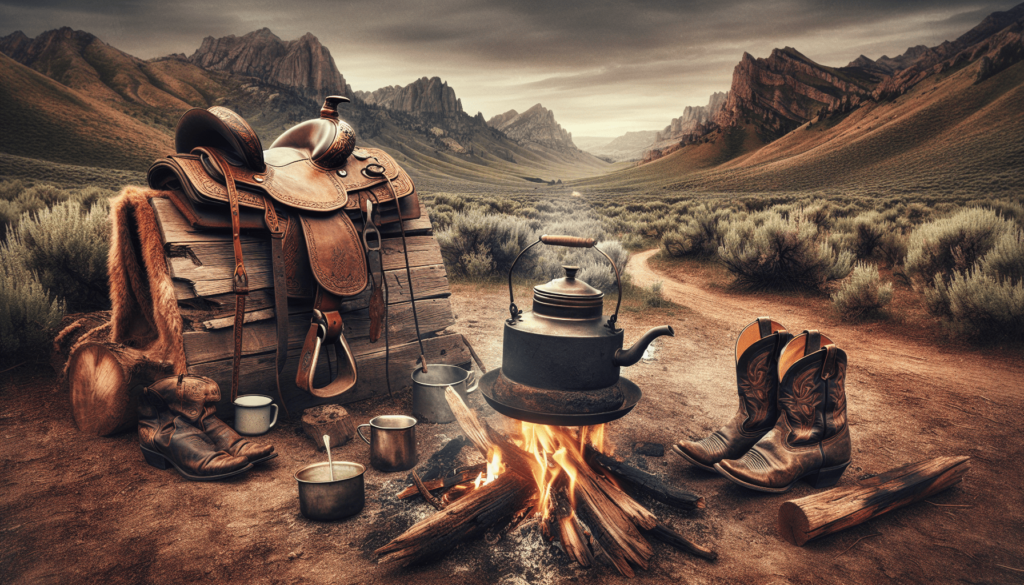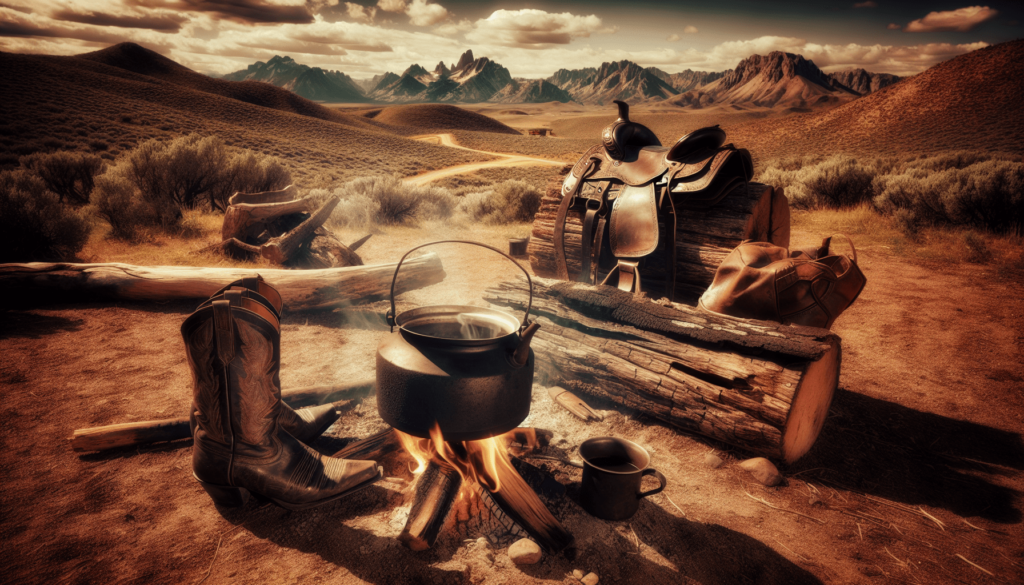Have you ever wondered what it was like to brew coffee in the rugged and raw days of the Old West? Imagine waking up at dawn in a rickety wooden cabin or around a makeshift campfire on the open range. Your day would likely be filled with long hours of work, and a steaming cup of coffee would be an essential start. But how did they manage to brew that beloved beverage without the modern conveniences we take for granted today?

Frontier Coffee: How They Brewed It in the Old West
The men and women of the Old West had a particular way of brewing coffee that reflected their limited resources, tough lifestyles, and ingenuity. In an era without electric kettles, drip machines, or even reliable stoves, they found unique solutions to meet their daily caffeine needs.
What Did They Use for Coffee in the Old West?
In the Old West, coffee wasn’t always just coffee. Depending on where you were, what you had, and sometimes even what you could trade, the ingredients for a cup of coffee could vary significantly.
| Ingredient | Description |
|---|---|
| Coffee beans | Often green, unroasted beans brought from South America or Africa. |
| Chickory | Used as an extender or substitute when coffee was scarce. |
| Corn or grains | Sometimes toasted and ground as a coffee substitute in lean times. |
| Sugar and milk | Rarely available but highly prized when they could be found. |
| Water | Often from streams, rivers, or wells, and needed to be boiled for safety. |
How They Brewed Coffee
The brewing process itself was quite different from what we’re accustomed to today. Without electric grinders or pre-ground coffee available, pioneers had to prepare their coffee from scratch.
Roasting Beans
Firstly, settlers roasts their green coffee beans. This process would typically involve using a skillet or a pot directly over a campfire or woodstove. The beans would be kept moving to avoid burning, a task that required patience and attention.
Grinding the Beans
Once roasted, the beans had to be ground. Hand-cranked coffee grinders were quite common, and these would do a respectable job. However, in a pinch, coffee could be ground using the flat of a knife, a hammer, or even by crushing them with rocks.
Boiling Water
Next, you’d need boiling water. Water was typically collected from natural sources and would need to be boiled to ensure safety. This was usually done in large, metal pots known as coffee boilers or simply in kettles when they were available.
The Brewing Method
The brewing method of choice in the Old West was the cowboy coffee method. Here’s how it worked:
- Heat the Water: Fill a large coffee pot with water and place it directly over the fire to bring it to a boil.
- Add the Grounds: Once boiling, a handful of coffee grounds were added directly into the pot.
- Stir and Settle: The mixture was stirred well, making sure all the grounds were soaked. After removing it from the heat, it was allowed to sit to let the grounds settle to the bottom.
- Pour and Serve: Finally, the coffee was poured carefully into tin cups, trying to keep most of the grounds in the pot.
The Enamelware Pot: Pioneer Coffee Gear
A staple item for brewing coffee in the Old West was the enamelware coffee pot. This durable pot could withstand the harsh conditions of the frontier. Its design with a sturdy spout and handle made it practical for brewing and serving coffee in one go.
The longevity and practicality of enamelware made it a favorite among frontiersmen and women. It was just as likely to be used for making coffee as it was for cooking stews and soups, showcasing the flexible and resourceful nature typical of pioneer gear.
Percolators: A Step Towards Modernity
While cowboy coffee was the traditional method on the open range, percolators also made their mark in the Old West. A percolator is a type of pot used to brew coffee by continually cycling the boiling brew through the grounds using gravity. This method provided a stronger and more consistent cup of coffee and required very little attention once started.
Percolators were especially popular in more settled areas or among those who could afford slightly more refined tools. These devices marked a step toward the more sophisticated coffee-brewing machines we know today.
Coffee Substitutes and Additives
In times of scarcity, Old West settlers turned to creative alternatives. Chicory, a root that can be roasted and ground, was a popular coffee substitute. It was especially common in areas where coffee was hard to come by. The taste of chicory was similar enough to coffee to make it a palatable alternative.
Roasted corn or grains also made an appearance when coffee supplies dwindled. While these substitutes lacked the caffeine boost of real coffee, they still provided a warm and comforting beverage in tough times.
In addition, if settlers had access to add-ins like sugar or milk, they would use them sparingly to enhance the flavor. Unsweetened coffee was the norm, but when sugar was available, it was a precious commodity.
Social Importance of Coffee in Daily Life
Coffee held a unique place in the social fabric of the Old West. It wasn’t just a morning ritual; it was often central to social interactions and community building.
Coffee and Social Bonds
In a time when survival was a daily challenge, simple pleasures like a cup of coffee became important social lubricants. Sharing coffee around the campfire wasn’t just about the drink itself but also about the conversations and bonds that it helped foster. A shared pot of coffee could bring people together, whether they were members of a cattle drive, pioneers in a wagon train, or neighbors in a small frontier town.
Coffee as a Comfort
Frontier life was harsh, and moments of comfort were few and far between. A steaming cup of coffee provided a rare moment of relaxation and normalcy. For many, it was a significant morale booster – a brief respite from the challenges of the wilderness or the monotony of daily labor.
Business and Coffee
Even in the rough-and-tumble settings of frontier towns, coffee played an essential role in business. Saloons, diners, and general stores often served coffee to draw in patrons. The quality of a town’s coffee could even become a point of local pride or friendly competition.
The Legacy of Frontier Coffee
The methods and traditions of brewing coffee from the Old West hold a special place in American history. They reflect the resilience and ingenuity of the people who made their lives on the frontier. Today, some of these methods are still celebrated and even preferred by those who appreciate a more hands-on, authentic approach to making coffee.
Cowboy Coffee Today
Cowboy coffee continues to be popular today, especially among campers and outdoor enthusiasts. The simplicity and effectiveness of this brewing method have kept it alive well into the 21st century. With just a pot, some water, and coffee grounds, anyone can enjoy a taste of the Old West.
Cultural Impact
The cultural impact of frontier coffee extends beyond just the method of brewing. It represents a connection to the past, a nod to the enduring spirit of those who tamed the American West. Modern coffee culture, with its emphasis on community, shared experience, and even the appreciation of simple, quality ingredients, echoes these historical roots.
Modern Adaptations
Today’s coffee drinkers might use more sophisticated methods, but the essence of frontier coffee brewing – the need for a strong, satisfying beverage – remains unchanged. Modern gadgets like portable coffee makers and gadgets designed for camping often mimic the straightforward effectiveness of those old methods.
Conclusion
Understanding how coffee was brewed in the Old West offers a fascinating glimpse into the daily lives of frontier pioneers. It’s a story of simplicity, resourcefulness, and community. Though times have changed and technologies have advanced, the spirit of frontier coffee still endures. Whether you’re sipping on a fancy espresso in a modern café or enjoying a robust cup of cowboy coffee by a campfire, you’re partaking in a tradition that’s been centuries in the making. So, next time you brew a pot of coffee, take a moment to appreciate the history and savor not just the flavor, but the experience that comes with it.

